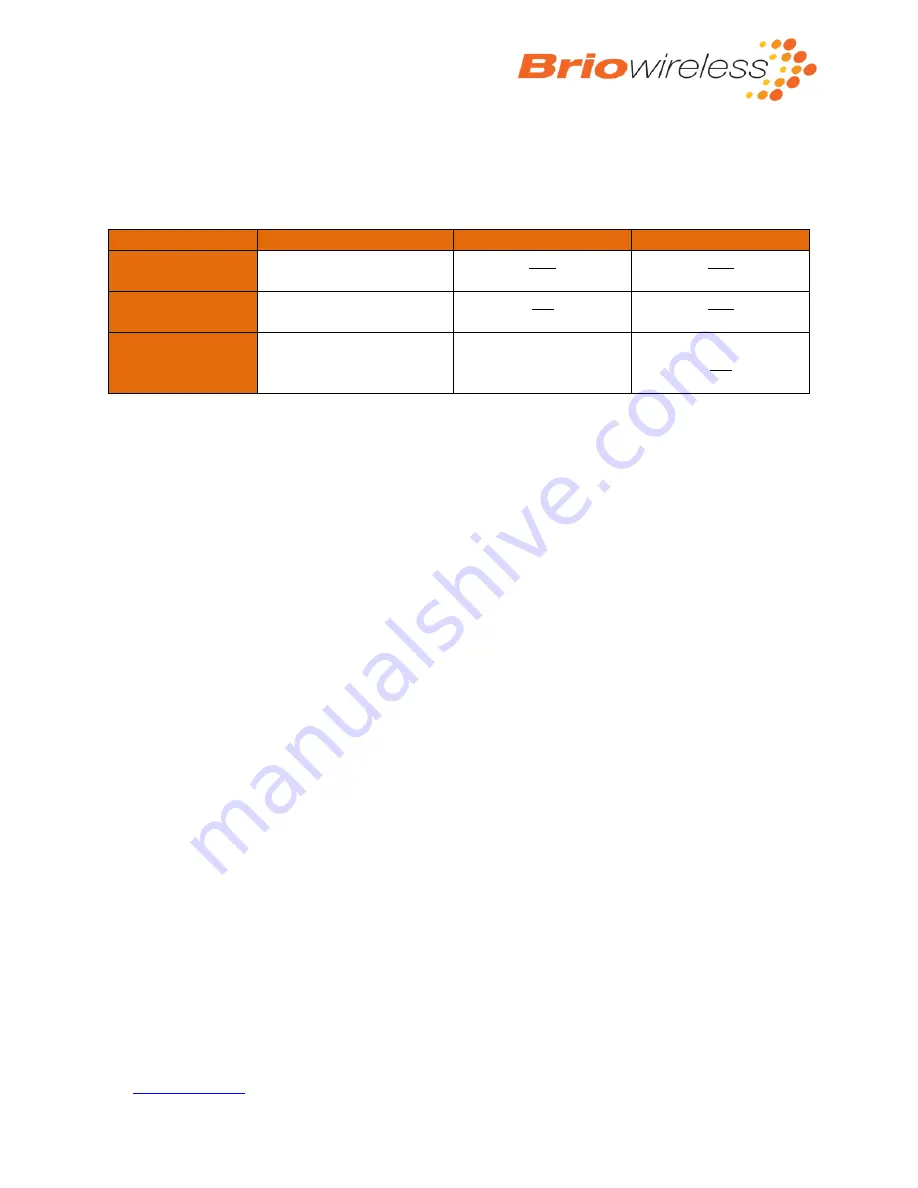
BitPipe™Cellular Dev
-Kit
User Guide
Copyright 2017 Briowireless Inc.
10
5.4
Bitpipe
™
mode selection
BitPipe devices provide three different modes of operation: Autonomous, Modem UART and Modem USB.
The three dipswitches on the Dev-Kit allow the configurat
ion of the BipPipe™ mode. The table below
shows the possible settings:
SW1-1
SW1-2
SW1-3
Modem UART
ON: Power-ON Radio
OFF: Power-Off Radio
OFF
OFF
Modem USB
ON: Power-ON Radio
OFF: Power-Off Radio
ON
OFF
Autonomous
ON: GPIO_0 connected to
LED on the Dev-Kit
OFF: GPIO_0 pulled-up
ON: pull-up I2C
OFF: pull-down I2C
ON
Please refer to the BitPipe
™
datasheet for more information about the BitPipe
™
operation modes.
6
Getting started with Modem in USB mode
The modem USB mode allows you to use the Bitpipe as the standard network interface to communicate
over the internet. It is the recommended method if you plan to add broadband connection to your host
through the USB interface. The following protocols are exposed depending on the BitPipe
™
model: PPP,
ECM and NCM. For each protocol, we provide you Linux scripts to easily establish connectivity to your
board. Please refer to the Application Note AN0031 (Using USB Interface on BitPipe
™
) for information
about establishing wireless connectivity through the USB.
To use the dev-kit in USB mode:
-
Configure the dipswitches in modem UART mode (SW1-1 = ON, SW1-2 = ON, SW1-3 = OFF).
See section 5.4 for details.
-
Connect the dev-kit to your board using a USB Mini B cable,
-
Connect the Wall adaptor in a power outlet. Insert the barrel plug in the demo board power
connector (box 7 in Figure 2). The
modem will boot automatically and the “Power ON” LED
(D1 next to the power connector) will turn ON when the modem is ready to communicate to
your board.
-
On Linux, run the appropriate connect_script supported by your BitPipe
™
model as indicated
by the application note AN0031.
Please note that the BitPipe Serial API, and the associated radio abstraction layer is not used when
communicating through the USB interface.

























